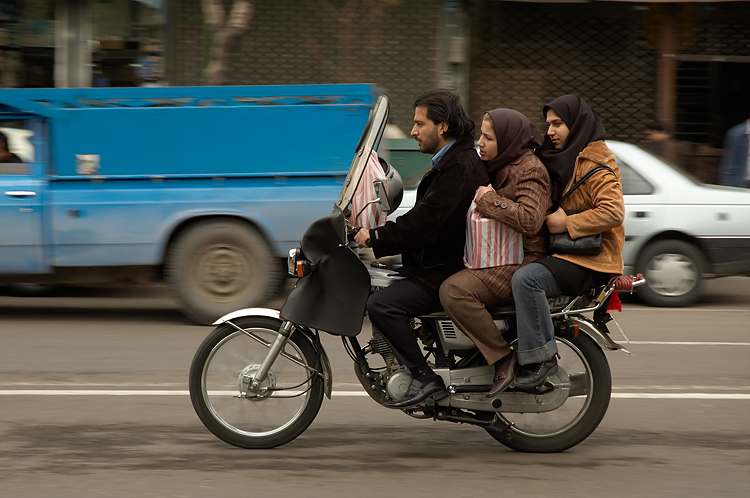|
Headless Rider Urban Legend
Headless Rider (首なしライダー ''Kubinashi Rider'') is a Japanese urban legend of a motorbike rider with a missing head. Legend A piano wire was stretched across one road, where a rider was hit in the neck when he crashed into it on his bike at high speed. However, the motorbike continued to run for some time with the headless rider on board. He became a ghost and continues to wander that road at high speed at night (or at the time of death, anniversary of death, etc.). The decapitation is sometimes attributed to falling objects from road signs, guardrails or trucks. The reason for running around is often stated to be that he is looking for his murderer or his severed head. There is also an urban legend of a 'headless biker gang', in which a group of headless riders explode on the mountain roads of Mount Hiko in Fukuoka Prefecture. There is also a variation in which severed heads are said to fly in, mostly with cries of despair, in a different location to where the motorb ... [...More Info...] [...Related Items...] OR: [Wikipedia] [Google] [Baidu] |
Japanese Urban Legend
A is a story in Japanese folklore which is circulated as true. These urban legends are characterized by originating in or being popularized throughout the country of Japan. These urban legends commonly involve paranormal entities or creatures who encounter and attack humans, but the term can also encompass widespread, non-supernatural rumors in popular culture. Urban legends in the former category rarely include the folklore ''yōkai'', instead of being primarily based on contemporary examples of ''yūrei'' (Japanese ghosts). Modern Japanese urban legends tend to occur in schools or urban settings, and some can be considered cautionary tales. Natural legends 1932 Shirokiya Department Store deaths On 16 December 1932, the Shirokiya Department Store fire in Tokyo resulted in 14 deaths. During the fire, many saleswomen in kimono were forced onto the roof of the eight-storey building. Rumors later spread that some of these women refused to jump into the safety nets held by firefighte ... [...More Info...] [...Related Items...] OR: [Wikipedia] [Google] [Baidu] |
Motorbike Rider
Motorcycling is the act of riding a motorcycle. For some people, motorcycling may be the only affordable form of individual motorized transportation, and small-displacement motorcycles are the most common motor vehicle in the most populous countries, including India, China and Indonesia. In developing countries, motorcycles are overwhelmingly utilitarian due to lower prices and greater fuel economy. Of all motorcycles, 58% are in the Asia Pacific and Southern and Eastern Asia regions, excluding car-centric Japan. Motorcycles are mainly a luxury good in developed nations, where they are used mostly for recreation, as a lifestyle accessory or a symbol of personal identity. Beyond being a mode of motor transportation or sport, motorcycling has become a subculture and lifestyle. Although mainly a solo activity, motorcycling can be social and motorcyclists tend to have a sense of community with each other. Reasons for riding a motorcycle For most riders, a motorcycle is a ... [...More Info...] [...Related Items...] OR: [Wikipedia] [Google] [Baidu] |
Piano Wire
Piano wire, or "music wire", is a specialized type of wire made for use in piano strings but also in other applications as springs. It is made from tempered high-carbon steel, also known as spring steel, which replaced iron as the material starting in 1834. Piano wire has a very high tensile strength to cope with the heavy demands placed upon piano strings; accordingly, piano wire is also used for a number of other purposes, including springs, surgical uses, and in special effects. History The oldest record of wire being made for musical instruments is from Augsburg in 1351.Dolge (1911, 124) Starting around 1800, the piano began to be built ever more ambitiously, with sturdier (eventually, iron) framing and greater string tension. This led to innovations in making tougher piano wire. In 1834, the Webster & Horsfal firm of Birmingham, United Kingdom brought out a form of piano wire made from cast steel; according to Dolge it was "so superior to the iron wire that the Englis ... [...More Info...] [...Related Items...] OR: [Wikipedia] [Google] [Baidu] |
Mount Hiko
, is a mountain on the border between Fukuoka Prefecture and Ōita Prefecture in Kyūshū, Japan. It has an elevation of 1,200 metres. It is an important site for Shugendo, and a famous place for rock climbing. It is supposed Miyamoto Musashi , also known as Shinmen Takezō, Miyamoto Bennosuke or, by his Buddhist name, Niten Dōraku, was a Japanese swordsman, philosopher, strategist, writer and rōnin, who became renowned through stories of his unique double-bladed swordsmanship a ... stayed there in order to train after surviving the Toyotomi clan defeat at Sekigahara. See also * Hikosan Jingū External links Hiko Hiko {{Fukuoka-geo-stub ... [...More Info...] [...Related Items...] OR: [Wikipedia] [Google] [Baidu] |
Fukuoka Prefecture
is a Prefectures of Japan, prefecture of Japan located on the island of Kyūshū. Fukuoka Prefecture has a population of 5,109,323 (1 June 2019) and has a geographic area of 4,986 Square kilometre, km2 (1,925 sq mi). Fukuoka Prefecture borders Saga Prefecture to the southwest, Kumamoto Prefecture to the south, and Ōita Prefecture to the southeast. Fukuoka is the capital and largest city of Fukuoka Prefecture, and the largest city on Kyūshū, with other major cities including Kitakyushu, Kurume, and Ōmuta, Fukuoka, Ōmuta. Fukuoka Prefecture is located at the northernmost point of Kyūshū on the Kanmon Straits, connecting the Tsushima Strait and Seto Inland Sea across from Yamaguchi Prefecture on the island of Honshu, and extends south towards the Ariake Sea. History Fukuoka Prefecture includes the Old provinces of Japan, former provinces of Chikugo Province, Chikugo, Chikuzen Province, Chikuzen, and Buzen Province, Buzen. Shrines and temples Kōra taisha, Sumiyoshi-jinja, ... [...More Info...] [...Related Items...] OR: [Wikipedia] [Google] [Baidu] |
Stone (1974 Film)
''Stone'' is a 1974 Australian outlaw biker film written, directed and produced by Sandy Harbutt. It is a low budget film by company Hedon Productions. Police officer Stone goes undercover with the Gravediggers outlaw motorcycle gang, to find out who is murdering their members, one by one. The film stars Ken Shorter and features Rebecca Gilling, Bill Hunter and Helen Morse. The film's soundtrack was composed by Billy Green and featured some members of his group Sanctuary. Motorcycles featured include the legendary Kawasaki Z1(900). Stone initially rides a Norton. The promotional trailer video features narration by radio and media personality John Laws. The film was featured in the documentary, ''Not Quite Hollywood'', in which Quentin Tarantino enthuses about his admiration for the film. Australian stuntman Peter Armstrong set a then-world record for riding a motorcycle off an 80-foot cliff to fall headfirst into the sea. Plot When several members of the GraveDiggers outla ... [...More Info...] [...Related Items...] OR: [Wikipedia] [Google] [Baidu] |
Dullahan
The Dullahan (Irish: Dubhlachan ; dúlachán, ), also called Gan Ceann (meaning "without a head" in Irish), is a type of mythological creature in Irish folklore. He is depicted as a headless rider, on a black horse, who carries his own head held high in his hand or under his arm. Terminology Dullahan or Dulachan ( ga, Dubhlachan uḃlaċan referring to "hobgoblin" (generic term; cf. Dullahan described as "unseelie (wicked) fairy"), literally "signifies dark, sullen person", according to the lexicographer Edward O'Reilly, apparently containing the stem ''dubh'' meaning "black" in Irish. Dulachan and Durrachan are alternative words for this "hobgoblin", and these forms suggest etymological descent from "anger" or "malicious" or "fierce". Dullahan was later glossed as "dark, angry, sullen, fierce or malicious being" encompassing both etymologies, though Thomas Crofton Croker considered the alternative etymology more dubious than the ''dubh'' "black" ("dark") etymology. L ... [...More Info...] [...Related Items...] OR: [Wikipedia] [Google] [Baidu] |
The Legend Of Sleepy Hollow
"The Legend of Sleepy Hollow" is a gothic story by American author Washington Irving, contained in his collection of 34 essays and short stories titled ''The Sketch Book of Geoffrey Crayon, Gent.'' Written while Irving was living abroad in Birmingham, England. "The Legend of Sleepy Hollow" was first published in 1820. Along with Irving's companion piece "Rip Van Winkle", "The Legend of Sleepy Hollow" is among the earliest examples of American fiction with enduring popularity, especially during Halloween because of a character known as the Headless Horseman believed to be a Hessian soldier who was decapitated by a cannonball in battle. In 1949, the second film adaptation was produced by Walt Disney as one of two segments in the package film '' The Adventures of Ichabod and Mr. Toad''. Plot The story is set in 1790 in the countryside around the Dutch settlement of Tarry Town (historical Tarrytown, New York), in a secluded glen known as Sleepy Hollow. Sleepy Hollow is renowne ... [...More Info...] [...Related Items...] OR: [Wikipedia] [Google] [Baidu] |
Cephalophore
A cephalophore (from the Greek for "head-carrier") is a saint who is generally depicted carrying their own severed head. In Christian art, this was usually meant to signify that the subject in question had been martyred by beheading. Depicting the requisite halo in this circumstance offers a unique challenge for the artist: some put the halo where the head used to be, others have the saint carrying the halo along with the head, and some split the difference. Associated legends often tell of the saint standing and carrying their own head after the beheading. The term "cephalophore" was first used in a French article by Marcel Hébert, , in , v. 19 (1914). Possible origins The ''topos'' can be traced to two sources. In a homily on Saints Juventinus and Maximinus, John Chrysostom asserted that the severed head of a martyr was more terrifying to the devil than when it was able to speak. "He then compared soldiers showing their wounds received in battle to martyrs holding their seve ... [...More Info...] [...Related Items...] OR: [Wikipedia] [Google] [Baidu] |
Japanese Urban Legends
A is a story in Japanese folklore which is circulated as true. These urban legends are characterized by originating in or being popularized throughout the country of Japan. These urban legends commonly involve paranormal entities or creatures who encounter and attack humans, but the term can also encompass widespread, non-supernatural rumors in popular culture. Urban legends in the former category rarely include the folklore ''yōkai'', instead of being primarily based on contemporary examples of ''yūrei'' (Japanese ghosts). Modern Japanese urban legends tend to occur in schools or urban settings, and some can be considered cautionary tales. Natural legends 1932 Shirokiya Department Store deaths On 16 December 1932, the Shirokiya Department Store fire in Tokyo resulted in 14 deaths. During the fire, many saleswomen in kimono were forced onto the roof of the eight-storey building. Rumors later spread that some of these women refused to jump into the safety nets held by firefighte ... [...More Info...] [...Related Items...] OR: [Wikipedia] [Google] [Baidu] |
Motorcycling
Motorcycling is the act of riding a motorcycle. For some people, motorcycling may be the only affordable form of individual motorized transportation, and small-displacement motorcycles are the most common motor vehicle in the most populous countries, including India, China and Indonesia. In developing countries, motorcycles are overwhelmingly utilitarian due to lower prices and greater fuel economy. Of all motorcycles, 58% are in the Asia Pacific and Southern and Eastern Asia regions, excluding car-centric Japan. Motorcycles are mainly a luxury good in developed nations, where they are used mostly for recreation, as a lifestyle accessory or a symbol of personal identity. Beyond being a mode of motor transportation or sport, motorcycling has become a subculture and lifestyle. Although mainly a solo activity, motorcycling can be social and motorcyclists tend to have a sense of community with each other. Reasons for riding a motorcycle For most riders, a motorcycle is a che ... [...More Info...] [...Related Items...] OR: [Wikipedia] [Google] [Baidu] |



Fairy_Legends_p0239-dullahan.jpg)

